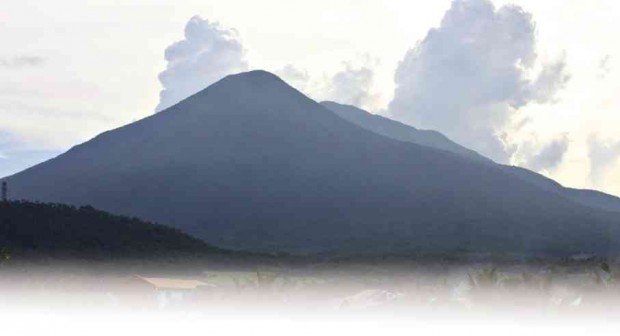
Pilgrims and trekkers are allowed only in designated areas at the base of Mt. Banahaw in Quezon and Laguna provinces as the government extends the closure of the mountain until 2019. DELFIN T. MALLARI JR.
LUCENA CITY—The government agency in charge of protecting Mt. Banahaw has warned pilgrims and mountaineers against groups offering “unrestricted” climbs to the mountain peak this Holy Week for a fee.
“Mounts Banahaw and San Cristobal are still closed … for the next three years. Any plans to climb and reach the mountain peak is unauthorized and therefore, illegal,” said Salud Pangan, park superintendent for Banahaw and San Cristobal of the Department of Environment and Natural Resources (DENR).
READ: Still no room at Banahaw for Lent trekkers
Pangan said she had been receiving information that some mountaineering groups and religious pilgrims had been led to believe that the closure order on the mountains had been lifted.
Pangan said her office had not issued permits to any group or person to climb and go to restricted areas of the mountain.
“I’m warning pilgrims and nature trippers that if someone shows [them] a permit from my office, most likely it is a fake document with my forged signature,” she said.
She also asked upland villagers not to serve as guides to climbers using hidden trails leading to restricted spots in Mt. Banahaw.
Starting Palm Sunday, DENR forest rangers, assisted by volunteer mountaineers, policemen and Army soldiers, will be posted in select spots at the base of the mountain to stop climbers.
The DENR, since 2014, has been on guard against the operation of syndicates, using online advertisements, to lure pilgrims and mountaineers to gain access to the mountain in exchange for a fee.
In 2004, the government installed barbed wires to seal off several trails leading to areas in the bosom of Mt. Banahaw to rehabilitate the mountain after years of abuse by trekkers.
In 2009, after several extensions of the ban, Republic Act No. 9847 was passed, designating Banahaw and San Cristobal as protected areas. The law closed the deeper sections of these mountains to climbers up to February 2016.
Last month, the Mounts Banahaw-San Cristobal Protected Landscape-Protected Area Management Board (MBSCPL-PAMB) had decided to extend the mountain’s closure for three more years, or until February 2019, to protect the gains from long years of reforestation and rehabilitation.
The multisectoral body was created by law to keep watch over government-declared protected areas.
Next week, Pangan’s team will put up new warning signs and advisories in different spots at the base of the mountain to serve as guide to devotees and visitors.
She said they would open more spaces in the mountain villages of Sta. Lucia and Kinabuhayan in Dolores town in Quezon province, which lies at the foot of Banahaw, for the spiritual activities of pilgrims.
Pangan reminded mountain guests that the MBSCPL-PAMB will collect a P20 entrance fee for the upkeep of the mountains.
The 10,901-hectare Mounts Banahaw and San Cristobal straddle the towns of Lucban, Tayabas, Sariaya, Candelaria and Dolores in Quezon; and parts of the towns of Rizal, Nagcarlan, Liliw and Majayjay, and San Pablo City in Laguna province.